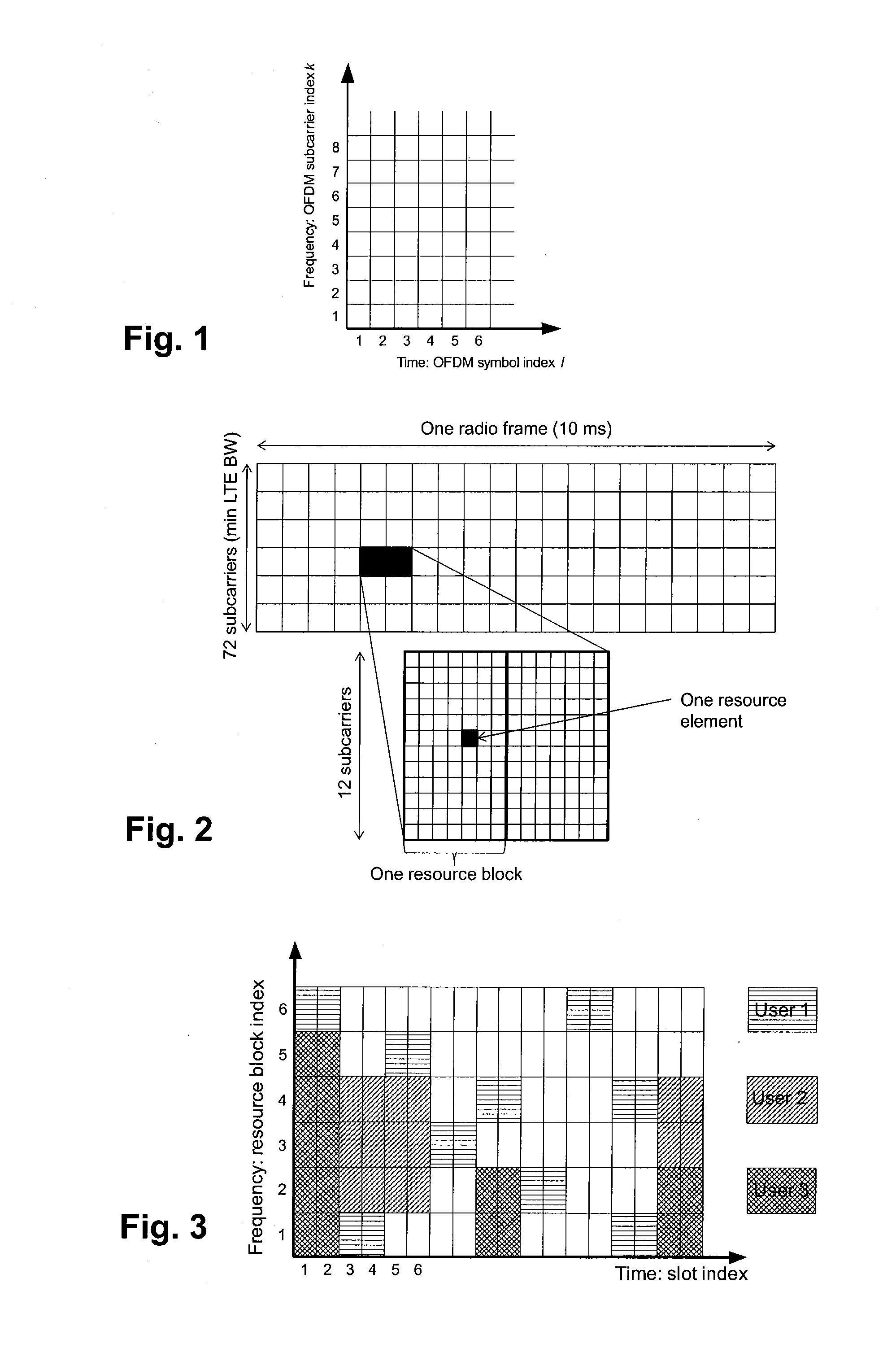Method for processing received OFDM data symbols and OFDM baseband receiver
a baseband receiver and data symbol technology, applied in the field of receiving ofdm data symbols and ofdm baseband receivers, can solve the problems of increasing computational complexity of demodulation and parameter estimation algorithms considering time/frequency-selective interference, and the inability to optimally consider non-constant noise/interference rather than constant noise/interference, and achieves low complexity, high performance, and performance advantage
- Summary
- Abstract
- Description
- Claims
- Application Information
AI Technical Summary
Benefits of technology
Problems solved by technology
Method used
Image
Examples
Embodiment Construction
[0041]FIG. 6 shows a simplified block diagram of an exemplary conventional LTE baseband receiver. After guard interval (GI) removal at 610, blocks of the received signal are processed via fast Fourier transform (FFT), at 612, to convert received time domain symbols into frequency domain. A number of processed FFT blocks form a time-frequency plane consisting of received data symbols and reference symbols. Channel estimation, at 616, and noise level estimation, at 614, is typically performed based on reference symbols. Data symbols and corresponding channel estimates are equalized, at 618, and then log likelihood values are computed, at 620, and fed into a deinterleaving / decoding unit 622 which obtain decoded data from the equalized and scaled symbols. Data bits output from forward error correcting (FEC) decoder 622 include control bits and payload bits.
[0042]Channel estimates from 616 are also fed into time offset estimator 630 and frequency offset estimator 632 to compute time and ...
PUM
 Login to View More
Login to View More Abstract
Description
Claims
Application Information
 Login to View More
Login to View More - R&D
- Intellectual Property
- Life Sciences
- Materials
- Tech Scout
- Unparalleled Data Quality
- Higher Quality Content
- 60% Fewer Hallucinations
Browse by: Latest US Patents, China's latest patents, Technical Efficacy Thesaurus, Application Domain, Technology Topic, Popular Technical Reports.
© 2025 PatSnap. All rights reserved.Legal|Privacy policy|Modern Slavery Act Transparency Statement|Sitemap|About US| Contact US: help@patsnap.com



